Contents
It is one of the worst feelings you can have as a rider. You go out to your bike, try to get it started up, and—nothing. So, what is the deal? You might be looking at a battery that has just gone flat and needs a recharge, you might have a bad motorcycle battery, or you might have some other issue going on.
There are several symptoms of a dead or dying motorcycle battery, ranging from the ignition not being able to turn and the battery not holding a charge to cracks, bulges, and discoloration appearing on the battery and more.
A closer inspection is warranted to determine whether a battery is dead or simply needs a recharge or terminal cleaning. Keep reading to learn more about the symptoms of a dead motorcycle battery, how to revive it, and when it is time to get a new one.
8 Signs of a Dead Motorcycle Battery
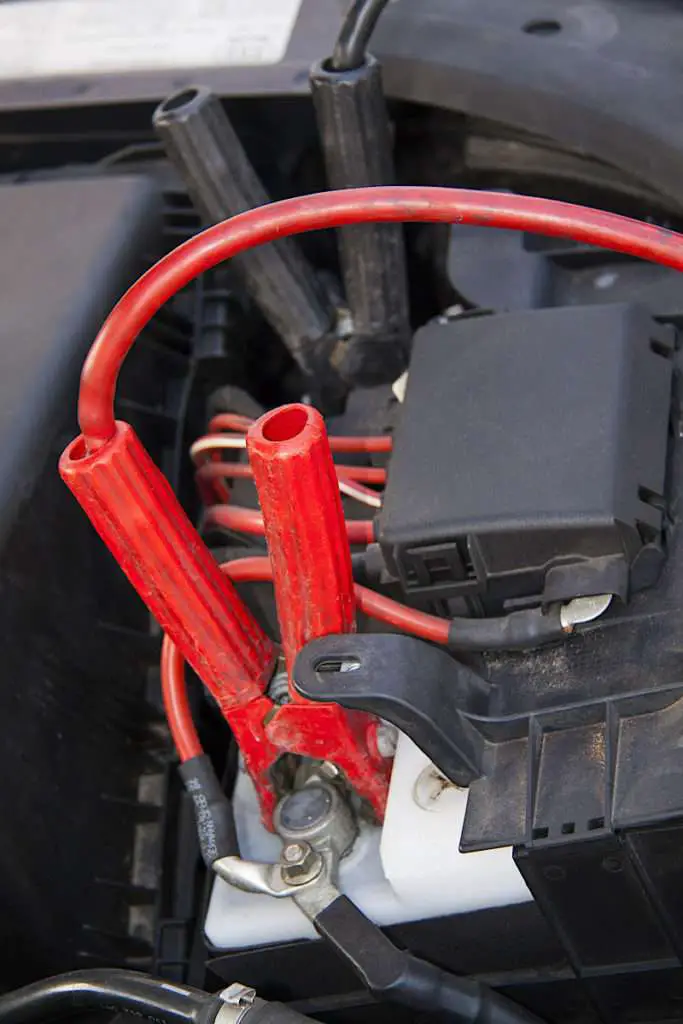
If you’re having trouble getting your motorcycle started and think that it’s a battery-related problem, there are several symptoms you can look for that will point you in that direction.
Here are a few of the different signs you might notice if you’re dealing with a dying or dead motorcycle battery:
- No ignition: If your battery is completely dead, you will not be able to get the motorcycle started at all. A bad or flat battery is usually the first suspected culprit in this instance. Still, there are many other problems with a motorcycle that can also cause it not to start, so it’s crucial to inspect the battery and rule it out before moving on to troubleshooting other areas of the bike if you run into this symptom.
- Not holding a charge: If your battery dies, you charge it back up, and it almost immediately runs out of charge again before stalling out, you’re dealing with a battery that can no longer hold an electrical charge. This is a battery that is not only dead; it’s a bad battery. However, other motorcycle problems can lead to not holding a charge, such as a bad alternator. So, if your battery won’t hold a charge, it might not be the battery at all.
- Fading horn and headlights: If your battery is dying but isn’t completely dead yet, a symptom that you might encounter is fading in either your emergency horn or your headlights and radio. These are symptoms that the electrical system is losing charge, and the battery is draining. The battery is dying at this point and can usually be recharged unless it is old, damaged, or the symptom is related to the charging system, such as a bad alternator.
- Bad voltmeter readings: If you get your battery tested with a multimeter or voltmeter and it doesn’t have any voltage, congratulations—you’ve got a bad battery. A voltmeter reading can be a useful tool in determining whether a battery is just flat and needs a recharge or whether a battery has gone completely dead and needs to be replaced.
- Broken or corroded battery terminals: If you suspect that your battery is at the end of its rope, the first indicators of physical damage you should be looking at are the battery terminals. If a motorcycle’s battery terminals are badly corroded, this can cause the battery not to function correctly, but it may function again if the terminals are cleaned. However, if the battery terminals are broken in any way, the battery probably just needs replacement.
- Cracks or bulges in the casing: A bulging motorcycle battery indicates a build-up of chemical gas inside the battery, which is due to the electrochemical oxidation (corrosion) that is occurring on the interior of the battery. A bulging or cracked motorcycle battery is usually an indicator that the battery is being overcharged, either due to the battery itself being bad or a charging system that is overcharging. In any case, once a battery begins to crack or bulge, it’s toast.
- Leaking: If your battery is leaking battery acid, this is another indication that there is severe oxidation going on inside the battery. Once a battery vents in this way, it is no longer safe to drive with and should be replaced. Batteries can also spring leaks in below-freezing temperatures, which are already bad for engine batteries anyway.
- Discoloration: Discoloration of a battery can be the result of stains from the interior of the motorcycle, but they can also be indicative of the same electrochemical processes that are happening in the case of a leaking or bulging battery. Any discoloration on a motorcycle battery should be scrutinized to see if its source can be determined. If a battery starts to change colors, it is probably on its last legs and should be replaced.
Symptoms of a dying or dead motorcycle battery fall into two major categories: symptoms you can see by physical inspection of the battery and symptoms you experience as a rider (no start, starting difficulties). Most riders notice operational problems before they notice physical damage unless they make a point to inspect their motorcycle periodically when they’re not riding. That means most people won’t notice they have a dying or dead battery until it’s already non-functional or almost non-functional.
If you have operational difficulties like a hard start, it’s important to immediately stop and inspect the physical state of your battery to see if there is any indication of damage or other problems before moving on to troubleshoot other areas of the bike. This can save you a lot of extra trouble and expense in the long run.
Is Your Motorcycle Battery Flat or Just Bad?
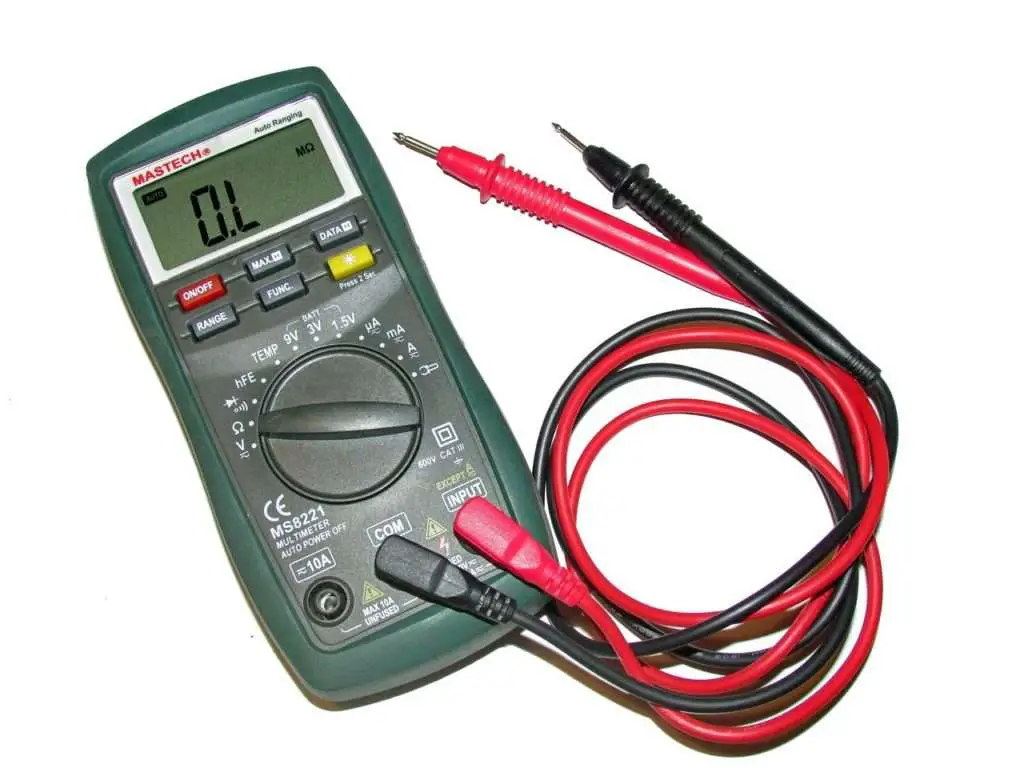
When you discover your battery doesn’t have a charge on your motorcycle, you may be wondering whether your battery is flat and can be recharged or it’s just bad. This is an important distinction to make since motorcycle batteries are not cheap, and you don’t want to have to install a new one if all you’ve done is accidentally run the charge down on your current battery.
The easiest way to test if your motorcycle battery is flat or bad is to either:
- Test the battery against a voltmeter
- Take the motorcycle battery to your local motorcycle dealership or repair shop and have them load test it for you
Either method will show you how much power your battery has left and if it can be salvaged or not.
If you’ve only run your battery down, putting the battery on a charger should be good enough to get your motorcycle back up to speed as long as you didn’t kill it by running it completely flat. But if your battery won’t take charge from a charger when it’s tested, that means it is officially done, and you’ll need to find yourself a new one.
How to Inspect a Motorcycle Battery for Damage and Lack of Voltage
So, you got on your motorcycle, and it wouldn’t start. The first thing you should do (after checking to make sure you have gasoline) is to inspect the motorcycle battery to see if you can determine the source of the problem.
Nine times out of ten, if you have a start-up problem with your motorcycle or any other vehicle engine, the battery should be the first thing you look at when you begin troubleshooting the problem. It’s one of the most common problems you’ll run into since they aren’t meant to last indefinitely.
Here is how you can conduct a physical inspection of your motorcycle’s battery:
- First, you’ll need to locate your motorcycle’s battery. In most bikes, the battery is located beneath the seat of the bike, which means you’ll need to lift the seat to access it. For motorcycles where the battery is placed in a differing location, confer with your owner’s manual to determine where the battery is and locate it.
- Remove the motorcycle battery. Before you do, make sure there is nothing in your immediate location that could cause a hazard, such as flammable liquids or an open flame. Unclip any clips or storage straps that are holding the motorcycle battery in place.
- Unscrew or unbolt the negative terminal of the motorcycle battery first. Then follow by unscrewing the positive terminal. At this point, the motorcycle battery should be free and clear of the motorcycle’s internal components, and you should be able to remove it easily.
- Check the battery for signs of physical damage. This includes any bulging, cracks, corrosion, discoloration, or leaking. Especially check for corrosion around the battery terminals, as this is the area that can significantly impact a motorcycle’s ability to start with ease.
- If physical damage is found, replace the battery. Even if the battery still has some life left, any kind of physical damage is a symptom that the battery is almost dead. If you continue to overcharge it when it is already leaking or bulging, it may explode. (Source: Harley Davidson Forums)
- If no physical damage is found, test the battery voltage. This can be done with either an automotive voltmeter or multimeter. If the readings on the voltmeter or multimeter indicate that the voltage is too low for the battery to ignite a charge, then the battery is dead. It should be placed on a charger to see if it can be revived.
- If the battery is flat, charge it. The only real way to determine whether a motorcycle battery will hold a charge is to charge it back up. Place the motorcycle battery on a battery charger and let it charge up all the way. If the battery refuses to take a charge or the charge burns out very quickly, then it’s an issue within the battery itself, and it’ll need replacement.
- If the battery looks good and charges, then your problem isn’t the battery. If you’ve thoroughly tested the battery and everything works correctly, then you’re looking at a different mechanical issue on the bike.
- When you replace the battery, be sure to tighten all connections at the battery terminal and elsewhere in the ignition system carefully. Even if a battery is good, a poor connection can prevent the battery from being able to jump off the bike. Making sure all wiring is both tight and tucked away from potential snags and cuts is a good idea to perform any time you inspect your motorcycle.
Inspecting your motorcycle battery is easy enough to do on your own that you don’t need a motorcycle mechanic to pull it off. However, if you’re not comfortable working on your own motorcycle battery and suspect an issue, don’t be afraid to refer it to the experts.
How to Tell Between a Dead Battery and a Dead Alternator
There’s one easy way for motorcyclists to tell whether their motorcycle’s battery is dead or whether they actually have a problem with their ignition or charging system, such as a defective alternator.
- If your motorcycle won’t start by cranking, but you can quickly get it jump-started, you should be looking at your alternator, not your battery.
- If you can’t even manage to get a jump-start on your bike, the culprit is more likely to be the battery itself.
If you have a problem with your alternator, it doesn’t matter how charged your battery is; the alternator will drain it during the motorcycle’s operation. So, even if you leave the house with a full battery, if you stop the bike at a gas station and go back out to start it, the bike is unlikely to start if you have a lousy alternator.
It isn’t easy to either test for a bad alternator or replace it without a little mechanical background, so if you suspect a bad alternator rather than a bad battery, it’s a good idea to get your bike inspected by a motorcycle technician. They can not only have a much easier time identifying and diagnosing the problem, but they’re also a lot less likely to cause more damage in the process of attempting to fix it.
Another problem you might be dealing with other than the alternator is the motorcycle’s regulator. This component ensures that the motorcycle can receive an electrical charge from the charging system. With a broken regulator, the battery will not be able to operate correctly.
How to Charge a Dead Motorcycle Battery
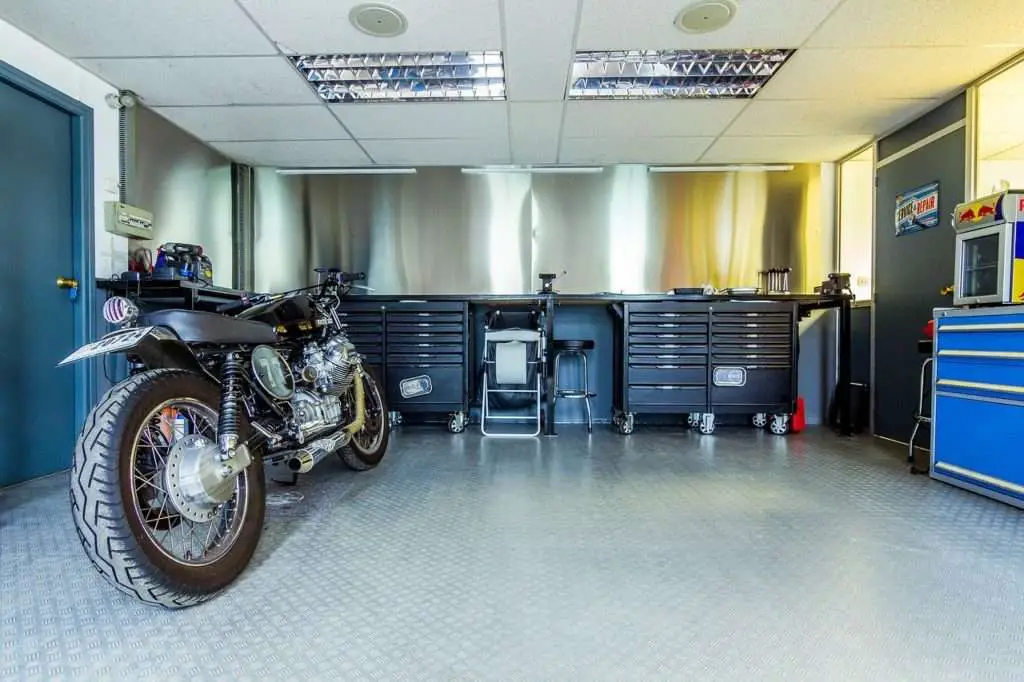
If your motorcycle battery is just flat, there are several ways you can recharge it. The easiest way to recharge it is to purchase a motorcycle battery charger or trickle charger. Placing the motorcycle battery on a charger should get it back up to full power in only a matter of hours. (Source: It Still Runs)
However, if you suspect that your motorcycle battery is dead because you left the headlights on or something, you also have the option to jump-start the motorcycle to get it running. Once the motorcycle is running, if it is left running or driven, the process of driving it should charge the battery up. Be careful, though. Running your battery flat too many times can shorten the lifespan of the battery and force you to seek out a replacement sooner than you would have liked.
If you find yourself without a battery charger, here are some quick steps for jumping off your motorcycle when you have a dead battery:
- Don’t jump off a motorcycle with a car battery. While you might be forced to if you are stranded somewhere, this isn’t a good idea. The reason is that car batteries contain a much higher amperage than motorcycle batteries, and the charge could permanently damage your motorcycle batter (as well as the battery on the car). Instead, jump your motorcycle off using another motorcycle or a portable jump-box.
- If you’re using another motorcycle to jump-start your bike, make sure both bikes are off. Find the battery terminals for each bike.
- Attach a positive jumper cable clamp (should have red-colored handles) to the positive terminal of the dead battery. A positive battery terminal on a motorcycle battery is usually indicated with a red color-coding or a POS/+ label.
- Attach the other positive jumper cable clamp to the positive terminal of the battery on the working motorcycle.
- Attach the negative jumper cable clamp (should have black-colored handles) to the negative terminal of the battery on the working motorcycle
- Attach the remaining negative clamp to a bare metal surface on the dead bike. This acts as your ground and will prevent any potential damage to the battery or other motorcycle electrical components from arcing electricity.
- Start the functioning motorcycle and allow it to run for several minutes. This will ensure that the battery on the good bike is strong and fully functional since you’ll be putting it under load when you use it to jump-start.
- Start the dead motorcycle. If the battery is just flat and not dead, this should allow the non-running motorcycle to be started. Once the dead motorcycle has been revived, allow it to run a good half hour. This will allow the bike’s alternator to charge the battery back up to full power. Once you are sure that the motorcycle with the weak battery will remain running, disconnect the jumper cables and reassemble the bikes.
It’s a good idea if you’ve jumped off your bike to take it out for a short spin around the neighborhood, but not so far that you can’t get help if the bike stalls or dies. Running the motorcycle will help the battery to recharge completely.
What Causes a Motorcycle Battery to Die?
Several conditions can lead to a motorcycle battery dying, and many of them involve a lack of maintenance or neglect.
Here are a few reasons that a motorcycle battery might become non-functional:
- Age: Batteries are consumable resources, so a motorcycle battery—no matter how powerful or expensive—isn’t designed to last forever. Once a battery ages, it will be less and less able to hold a sufficient charge until the point that it can no longer start the bike.
- The battery was run down: This happens if someone leaves their headlights or other electrical components on the motorcycle running off of the bike’s electrical system when the bike isn’t running. Without the alternator to recharge the motorcycle battery, this will drain the battery flat in a matter of hours.
- Battery defect: If a battery becomes faulty through neglect or just regular use, it can become overcharged, which, in turn, can cause it to develop electrochemical oxidation. Eventually, this will prevent the battery from operating.
- Overcharging: An alternator or regulator that isn’t working correctly can potentially zap a motorcycle battery, as can jumping off a motorcycle on a car or truck.
Once a battery begins to lose its ability to hold a charge or shows signs of visible physical wear, it’s a good idea to start looking into a replacement.
Accessories for Maintaining Your Motorcycle Battery
To either prevent your motorcycle battery from dying or revive it afterward, there are a few handy accessories you can keep around your garage or workshop that can make your life significantly easier.
Here are a few of the essentials you’ll want to keep around to make sure you can get your bike started when you need to:
- Battery charger: A battery charger for your motorcycle is a good investment since it gives you a place to keep the battery charged when you’re not actively riding the bike, and it’s also an excellent way to test whether your battery can still hold a charge at home without having to drag it down to the repair shop.
- A portable jump-box: A jump-box is an electrical generator that acts as a means to jump off a car or motorcycle when there are no other functioning vehicles around to do it or when you want to jump off a motorcycle without having to risk damage to the motorcycle’s electrical systems (which is always a threat with a traditional jump-off).
- Jumper cables: Other than a jump-box, keeping a set of jumper cables handy is not just a good idea for being able to jump off your motorcycle battery if you need to. It also means you have jumper cables lying around in case someone else needs to borrow them. They’re always useful in an emergency.
If you have these back-up accessories, you should still be able to get your motorcycle running even if you do run your battery flat.
How Long Does a Motorcycle Battery Last?
How long a motorcycle battery lasts before beginning to die of natural causes varies from rider to rider. Still, manufacturers generally agree that 48 months is the average lifespan of a motorcycle battery. (Source: Cruiser)
However, a battery that is not maintained correctly may only get half of that lifespan, while a motorcycle battery that is babied can easily tack on another 12-24 months.
It all comes down to proper maintenance. Here are some practices that can potentially cause a motorcycle battery to die more quickly:
- Leaving the battery in sub-freezing temperatures
- Only riding the motorcycle for short distances, never allowing the battery to charge fully
- Leaving the motorcycle unridden for weeks or months at a time
- Trying to run too many secondary electrical accessories off the motorcycle
All of the above practices can cause a motorcycle battery to wear out much more quickly than it needs to. However, some practices can help your motorcycle battery last longer than average.
Here are some ways you can help extend its working life:
- Keep the battery terminals free of corrosion by cleaning them regularly
- Check the electrolyte levels on conventional batteries and top off with distilled water if necessary (when the top of the battery becomes exposed to the air)
- Keep the battery charged by riding the motorcycle regularly or investing in a battery charger
Like car batteries, many motorcycle batteries come with a warranty, so if you believe that your battery has died prematurely, be sure to take it back to the vendor that you purchased it from with a receipt. Even if it has been a year or two, you may still be able to get at least some prorated coverage on your battery to go towards the cost of the new one. (Source: Weibull)
No motorcycle battery lasts forever, but with just a little bit of maintenance and foresight, you can make sure you get the most out of yours before it goes.
Battery Maintenance Is Important for Motorcycles
Keeping track of the voltage on your motorcycle battery and making sure that it is taken care of so that it works properly when you need it is an integral part of riding a motorcycle. There is nothing worse than being stranded, and nothing will do it faster than a dead battery.
Making sure that your battery is in good shape is also the first step in troubleshooting more severe problems with your bike, so if you are just getting started in working on bikes for yourself, it is an excellent place to start.

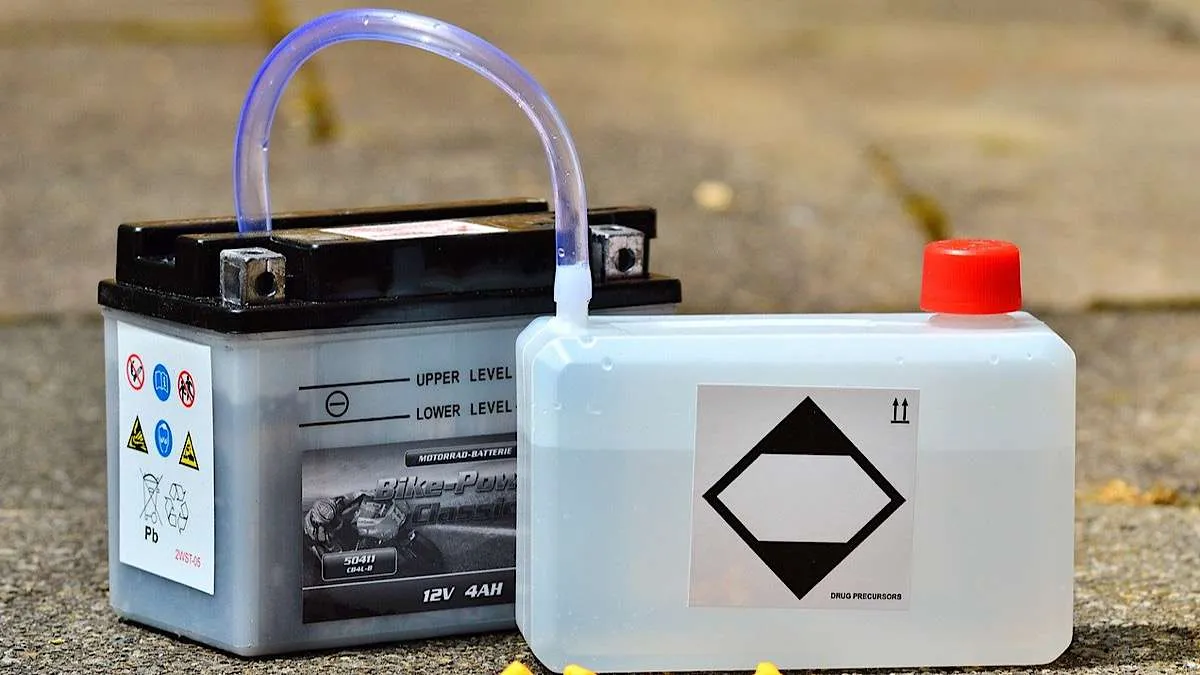
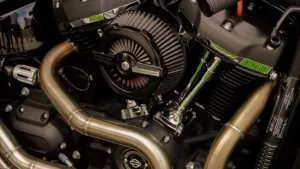 Do Lithium Motorcycle Batteries Need a Special Charger?
Do Lithium Motorcycle Batteries Need a Special Charger?  Are Motorcycle Fuses and Car Fuses the Same?
Are Motorcycle Fuses and Car Fuses the Same?  Do Heated Motorcycle Gloves Work?
Do Heated Motorcycle Gloves Work?  Can You Put a Fuel Gauge on a Motorcycle?
Can You Put a Fuel Gauge on a Motorcycle? 